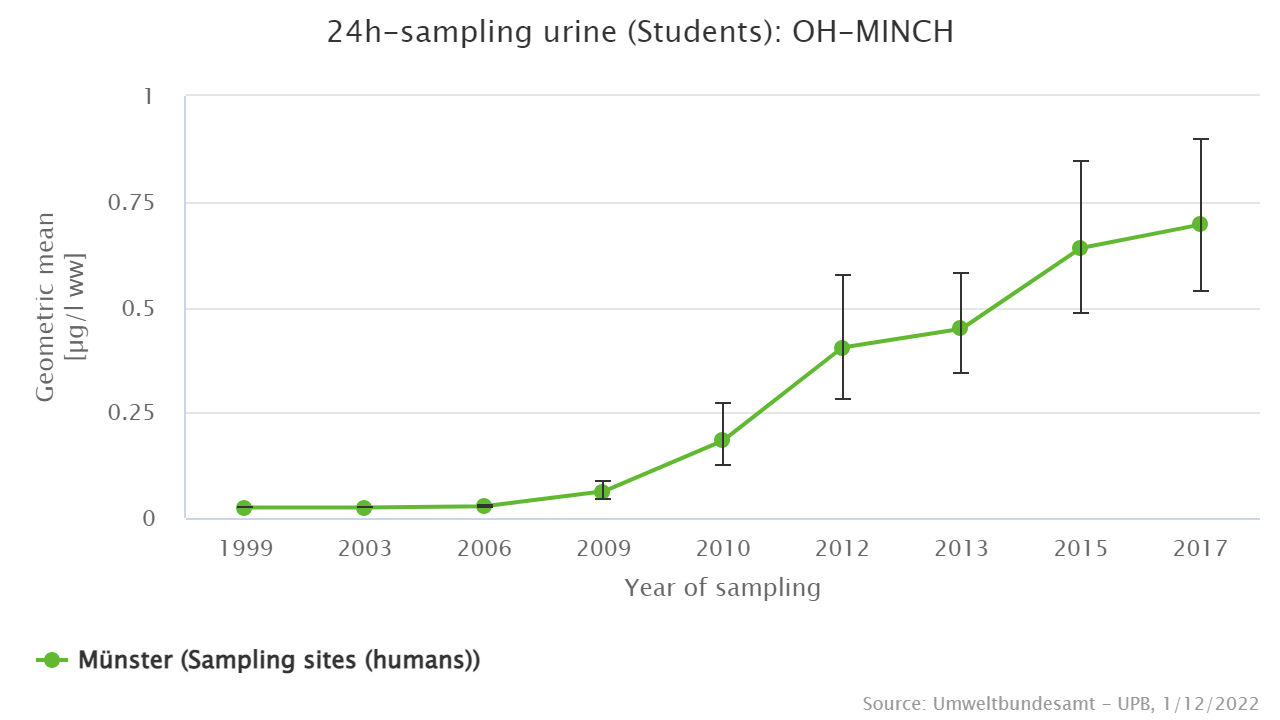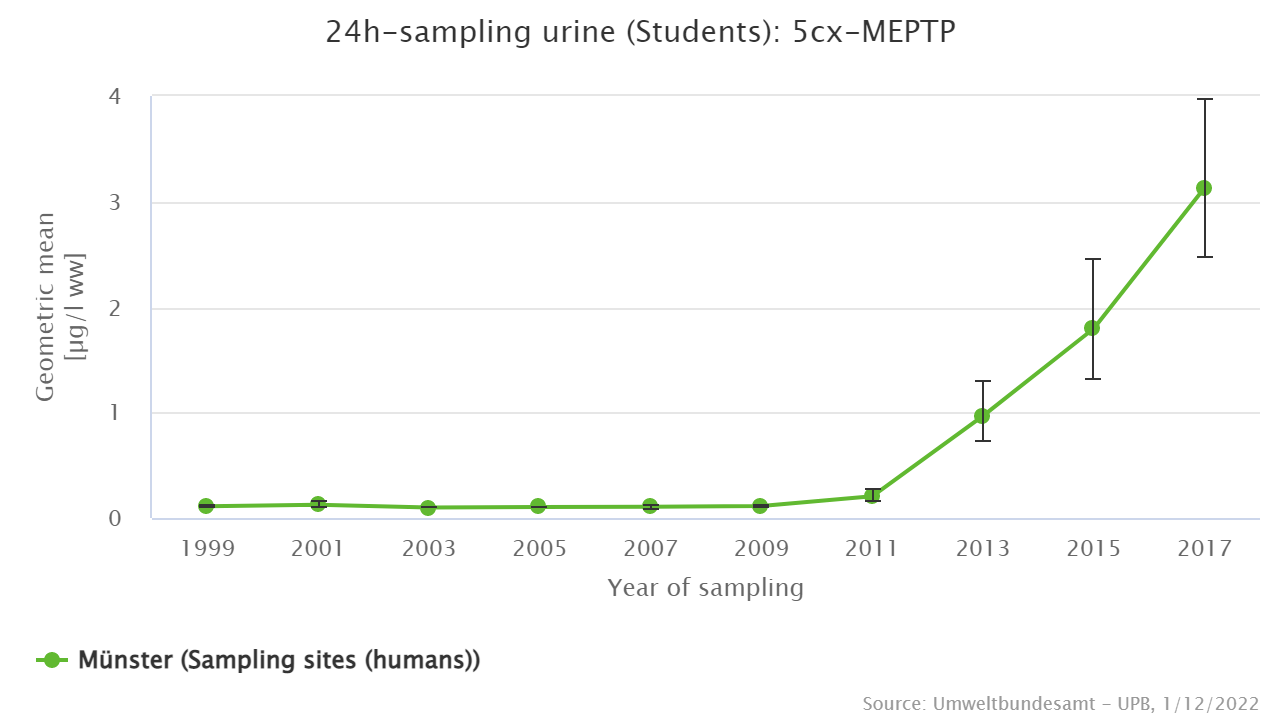Phthalate substitutes in humans: DINCH and DEHTP-Metabolites
The chemicals DINCH and DEHTP are often used as substitutes for phthalate plasticizers. They can also be detected in human urine.
Plasicizers are used to make plastic soft ald flexible. The biggest group of plasticizers is the group of chemicals called phthalates. For the last years some representatives of this group have become heavily regulated and phased out of use because of their toxicity and endocrine disruptive properties. Thus the need for less or non-toxic alternatives grew.
Examples for phthalate substitutes are the chemicals Hexamoll DINCH (cyclohexane-1,2-dicarboxylic acid-diisononyl ester) and DEHTP (di(2-ethylhexyl) terephthalate). They do not belong to the group of phthalates but behave similarly and thus can be used as plasticizers.
Theses substitutes are assessed less toxic and are used in many consumer near products like toys and food contact materials, especially as a substitute for the phthalate DEHP (di-ethylhexyl phthalate).
The wide use and similar properties of the substitutes suggest the possibility of migration out of the products and human exposure towards these substances.
To evaluate this thesis DINCH and DEHTP were analyzed in 24-h urine samples of the German Environmental Specimen Bank (ESB).
The exposure of the students towards DINCH rose starting in 2006 (see figure 1, shown is the main DINCH metabolite OH-MINCH). Since 2013 DINCH exposure could be shown in all analyzed samples.

Analysis of DEHTP showed a similar picture: exposure rose steadily since 2009 (see figure 2, shown is the main DEHTP metabolit 5cx-MEPTP). In most current samples (year 2017) DEHTP could be shown in all analyses.

The data shows a similar trend although starting at slightly different time points. This mirrors the rising market need for phthalate substitutes, especially DEHP substitutes. It also confirms the thesis that the use of substitutes lead to direct human exposure.
The current measured exposures to DEHTP and DINCH (year 2017) do not exceed the HBM-I value derived by the German human biomonitoring commission. The tolerable daily intakes derived by the European Food Safety Authority (EFSA) are also not exceeded.
At this time no acute action has to be taken to reduce further exposure towards DEHTP and DINCH. Considering the continuing steep increase over the last years, future monitoring is inevitable to keep track of human exposure towards these substances.
Show all data of the result description
Updated at: 2022-01-12
Recommended analysis examples
Recommended profiles
Analytes
-
Important substitute for phthalates
-
Important substitute for phthalates
Extended information
Links to external information and legislation
Literature
-
German Environmental Specimen Bank: 24-hour urine samples from 1999 to 2017 reveal rapid increase in exposure to the para-phthalate plasticizer di(2-ethylhexyl) terephthalate (DEHTP)
Lessmann, Frederik; Kolossa-Gehring, Marike; Apel, Petra; Rüther, Maria; Pälmke, Claudia; Harth, Volker; Brüning, Thomas; Koch, Holger Martin
Environment International 132 (2019), 105102, 2019
-
Time trend of exposure to the phthalate plasticizer substitute DINCH in Germany from 1999 to 2017: Biomonitoring data on young adults from the Environmental Specimen Bank (ESB)
Kasper-Sonnenberg, Monika; Koch, Holger M.; Apel, Petra; Rüther, Maria; Pälmke, Claudia; Brüning, Thomas; Kolossa-Gehring, Marike
International Journal of Hygiene and Environmental Health (2019), online 1 August 2019, 2019
-
Entering markets and bodies: increasing levels of the novel plasticizer Hexamoll® DINCH® in 24 hr urine samples from the German Environmental Specimen Bank
Schütze, André; Kolossa-Gehring, Marike; Apel, Petra; Brüning, Thomas; Koch, Holger M.
International Journal of Hygiene and Environmental Health (2013), online 16 August 2013, 2013